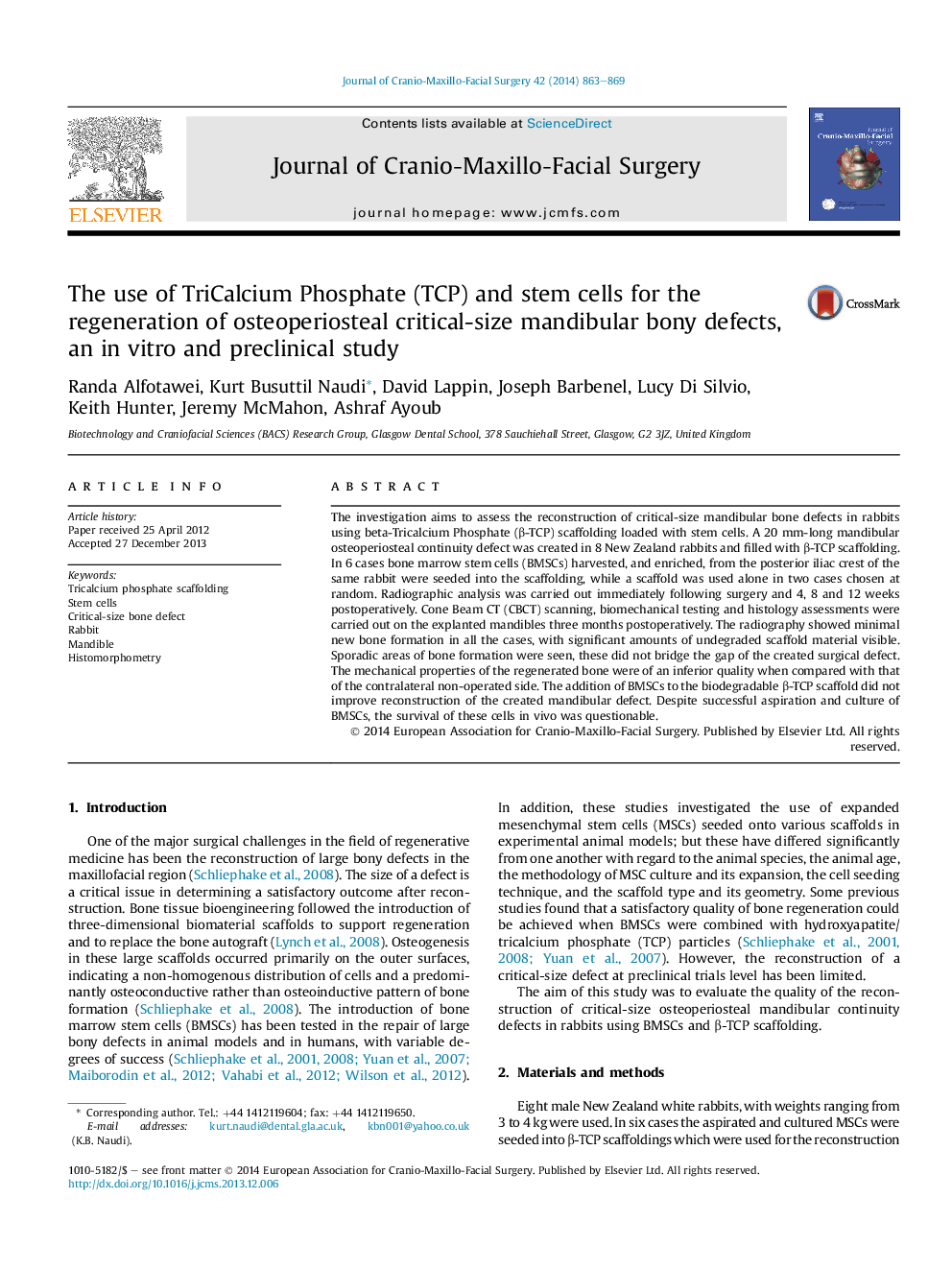| Article ID | Journal | Published Year | Pages | File Type |
|---|---|---|---|---|
| 3143308 | Journal of Cranio-Maxillofacial Surgery | 2014 | 7 Pages |
The investigation aims to assess the reconstruction of critical-size mandibular bone defects in rabbits using beta-Tricalcium Phosphate (β-TCP) scaffolding loaded with stem cells. A 20 mm-long mandibular osteoperiosteal continuity defect was created in 8 New Zealand rabbits and filled with β-TCP scaffolding. In 6 cases bone marrow stem cells (BMSCs) harvested, and enriched, from the posterior iliac crest of the same rabbit were seeded into the scaffolding, while a scaffold was used alone in two cases chosen at random. Radiographic analysis was carried out immediately following surgery and 4, 8 and 12 weeks postoperatively. Cone Beam CT (CBCT) scanning, biomechanical testing and histology assessments were carried out on the explanted mandibles three months postoperatively. The radiography showed minimal new bone formation in all the cases, with significant amounts of undegraded scaffold material visible. Sporadic areas of bone formation were seen, these did not bridge the gap of the created surgical defect. The mechanical properties of the regenerated bone were of an inferior quality when compared with that of the contralateral non-operated side. The addition of BMSCs to the biodegradable β-TCP scaffold did not improve reconstruction of the created mandibular defect. Despite successful aspiration and culture of BMSCs, the survival of these cells in vivo was questionable.
